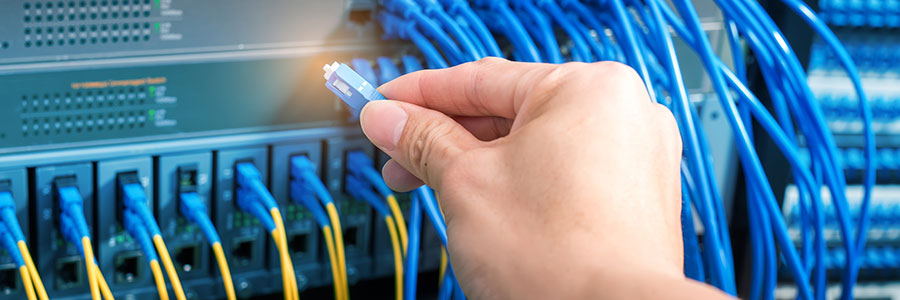Safeguarding your small-business network is crucial to running your operations smoothly and protecting sensitive information. With cyberattacks becoming increasingly sophisticated, it's imperative that you take proactive measures to secure your network and prevent potential data breaches.
Here are 10 essential tips to help you protect your small-business network:
1. Create strong passwords and enable multifactor authentication (MFA)
Despite the constant reminders to use strong and unique passwords, many people still opt for easy-to-remember options. As a business owner, it's important that you set strict password policies for all your employees and enforce them regularly. Additionally, enabling MFA adds an extra layer of protection by requiring a second form of identification before granting access to sensitive information.
2. Install and maintain antivirus and anti-malware software
These software are designed to detect and remove malicious programs that can harm your network. Make sure to install reputable antivirus or anti-malware software on all devices connected to your network, and regularly update these programs to stay protected against the latest threats.
3. Implement a firewall
A firewall acts as a barrier between your network and the internet, monitoring traffic for potential threats and blocking unauthorized access. There are two types of firewalls: hardware firewalls, which are physical devices that you install on your network, and software firewalls, which are installed on individual devices. It's recommended to implement both types of firewalls for maximum protection.
4. Use a virtual private network (VPN) for remote access
If you have employees or partners who need to access your network remotely, using a VPN is vital. A VPN creates a secure connection between the user's device and your network, encrypting all data transmitted over the internet. This prevents hackers from intercepting sensitive information.
5. Keep your software up to date
Cybercriminals frequently take advantage of vulnerabilities in outdated software to infiltrate networks and compromise security measures. By regularly updating your operating systems and software applications, you can patch these vulnerabilities and reduce the risk of a cyberattack.
6. Monitor your network traffic for suspicious activity
Deploying a network monitoring system can help you detect and respond to any unusual or suspicious activity on your network. This includes tracking logins, file transfers, and data access. By keeping an eye on your network traffic, you can swiftly identify potential security threats and take appropriate action.
7. Be careful about what you download and click on
Malicious email attachments and links are a common way for cybercriminals to gain access to networks. It's critical to educate your employees about the potential dangers of downloading attachments or clicking on links from unknown sources. Implementing email security measures, such as spam filters and email authentication, can also help prevent these types of attacks.
8. Secure your physical network
While most of the focus is on securing networks digitally, it's important not to overlook physical security measures. Make sure your network equipment and servers are stored in a secure location, and limit access to only those who need them to perform their tasks. Additionally, consider implementing measures such as CCTV cameras and access control systems to monitor and restrict physical access to your network.
9. Train your employees on cybersecurity best practices
Your employees play a significant role in keeping your network secure. It's essential to provide regular training in cybersecurity best practices, including how to identify and report potential security threats and how to securely handle sensitive information. This can help create a culture of cybersecurity within your organization.
10. Develop an incident response plan
Even with your utmost diligence, a cyberattack can still happen. It's therefore crucial to have a plan in place for responding to and recovering from an attack. This includes regularly backing up important data, having designated individuals responsible for handling an attack, and establishing communication protocols with employees and business partners in case of a security breach.
Ultimately, securing your small-business network requires a multilayered approach that includes both technological measures and employee training. By implementing these 10 tips, you can better safeguard your network and your business against potential cyberthreats.
Don't leave your network vulnerable. Our team of experts at Complete Document Solutions can help assess your network security and provide tailored solutions to protect your business. Contact us today to learn more.



Leave a comment!